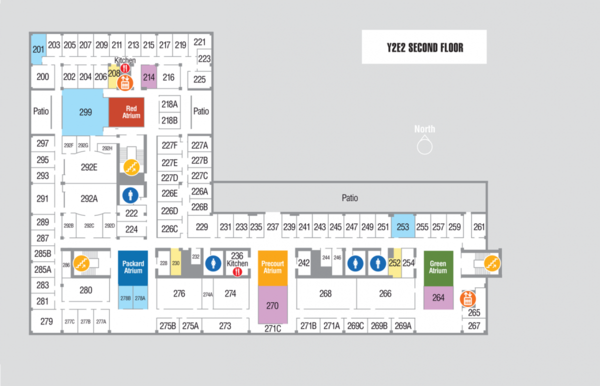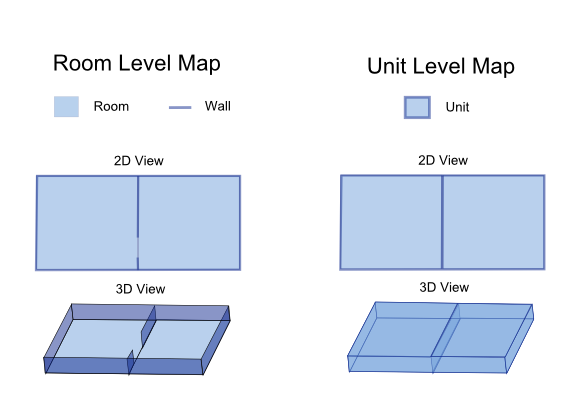Termite/Mapping Recommendations
Indoor Mapping Recommendations
This page contains recommendations for indoor mapping in general and in particular with the Termite editor. Many of these recommendations are the result of three years of indoor mapping with the company Micello. All these suggestions are open for discussion and refinement.
Walls and Two Kinds of Indoor Maps
There some question whether a room object contains a wall or the wall should be added as a separate object. The question becomes more complicated when other map types are considered. An shopping mall often is drawn at the unit level. In this case rooms are not displayed, only the area occupied by each store, regardless of how many rooms and walls appear inside the unit. An map of an apartment complex is often shown at the unit level, where the detail inside each given unit is not shown.
Below we discuss recommendations for these different map types.
Room Level Map
In a room level map, we recommend drawing all walls and separately drawing rooms. This allows the placement of a door or of an opening between rooms. If the room object includes the wall in it, an opening between rooms can not be displayed. Generally speaking, the boundary between rooms does not always include a wall. This can be true in a house where you have an opening between the living room and dining room. Likewise it is common in a museum to have rooms separated by a large opening.
In fact, for the sake of rendering the map the room is not even necessary. However, it is helpful to have a room object to be used for identification. The room object will be used to identify a navigation endpoint, display a search result (either with highlighting or placing a pin at its center) or for many other uses.
The following map image is a room level map of an academic building:
Unit Level Map
Here a unit refers to a collection of rooms that form a separate, addressable part of a building. A unit can be a store in a mall or an apartment (flat) in an apartment complex. When the unit is drawn, it can be used as a black box representation of what is inside it. In this case, it is recommended that walls are NOT drawn between unit objects. The unit implicitly includes the wall.
The unit is analogous to a building in that way. When a building object is drawn, a wall is not also draw on it, rather then wall is implicitly included. In fact, just as you can create a map for the inside of a building, you can also create a map for the inside of a unit. This may be done to create a map of the anchor store at a mall, or the map of a unit in an apartment complex.
The following map image is a unit level map of a shopping center:
Unit/Room Confusion
The difference between a unit level map and a room level map may make sense, but it is at risk of causing confusion for a typical map maker who might not spend a lot of time thinking about this distinction. This should be addressed in deciding what the standard should be.
The following pictures illustrate a room level and unit level diagram both in a 2D representation and a 3D representation, as intended in this recommendation. The room level diagram is intended to show the internal structure of the room. The unit level diagram is intended to show an area of the building with the internal structure omitted.
The 2D room level diagram shows a pair of room objects together with some wall objects. The unit level diagram shows a pair of unit objects and no wall objects. The rendering of the two looks very similar. Unfortunately this is the representation we use when we are editing the map.
The same image is shown in 3D. In this case, the walls in the room level diagram are vertical whereas the room object is a 2 dimensional object drawn on the floor. In the unit level diagram, the unit is a 3 dimensional rectangular solid. In this representation the distinction between the unit and the room is more apparent.


